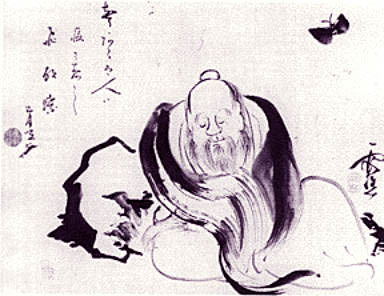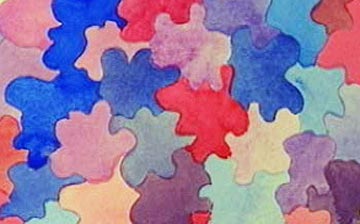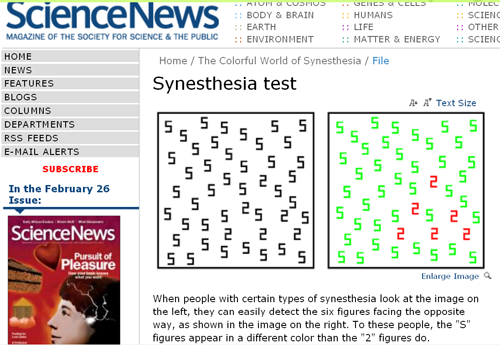"In this two-part radio series from BBC Radio
4, the condition of synaesthesia is explored through interviews
with scientists and those who have been diagnosed with the condition.
Synaesthesia is a condition in which the five senses intermingle,
so that stimulation in one sense may give rise to a stimulation
in another sense. For one example, certain letters of the alphabet
may be associated with certain colors for a synaesthete. The program
here is divided into two 30-minute sections. The first program explores
the experiences of several synaesthetes, such as James Wannerton
who tastes spoken words, and Jane Mackay, who sees shapes and colors
when she hears music. The second part of the program “examines
the mounting evidence that we all start life with the potential
for synaesthesia." The study of this condition is pushing the
boundaries of neuroscience, and this provocative exploration of
this condition and its study offered by the BBC is quite engaging
and informative."
-- The
Scout Report



